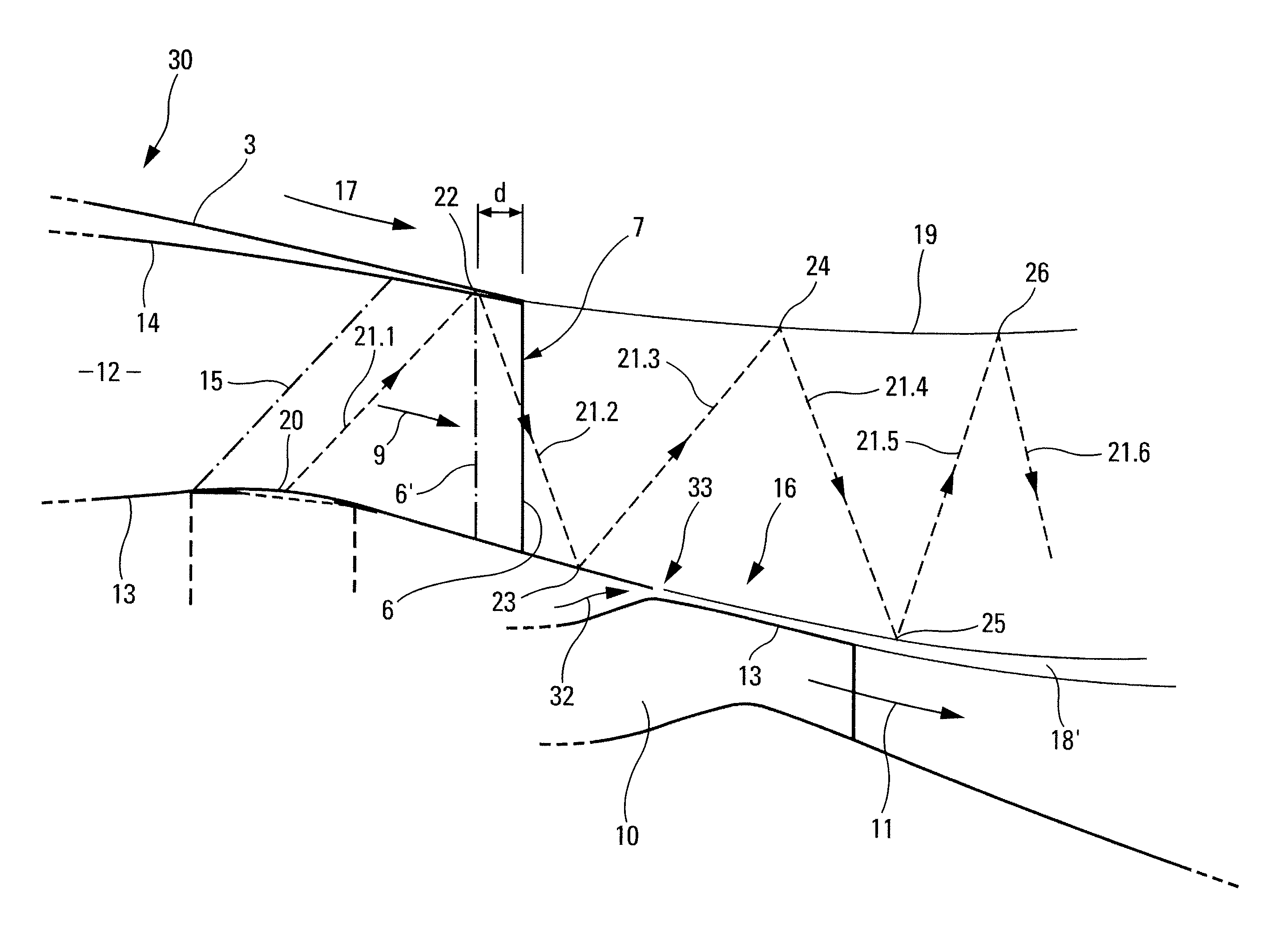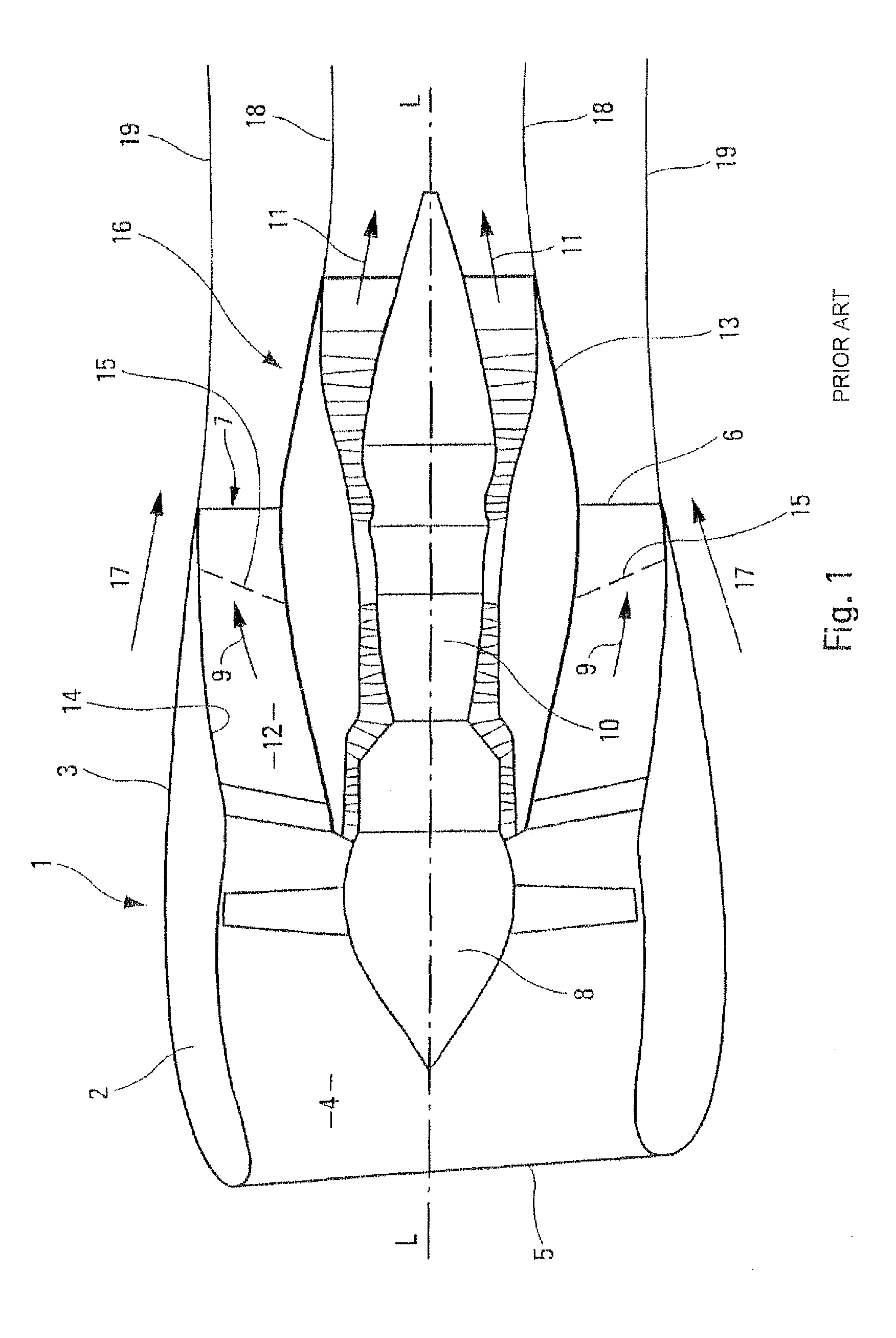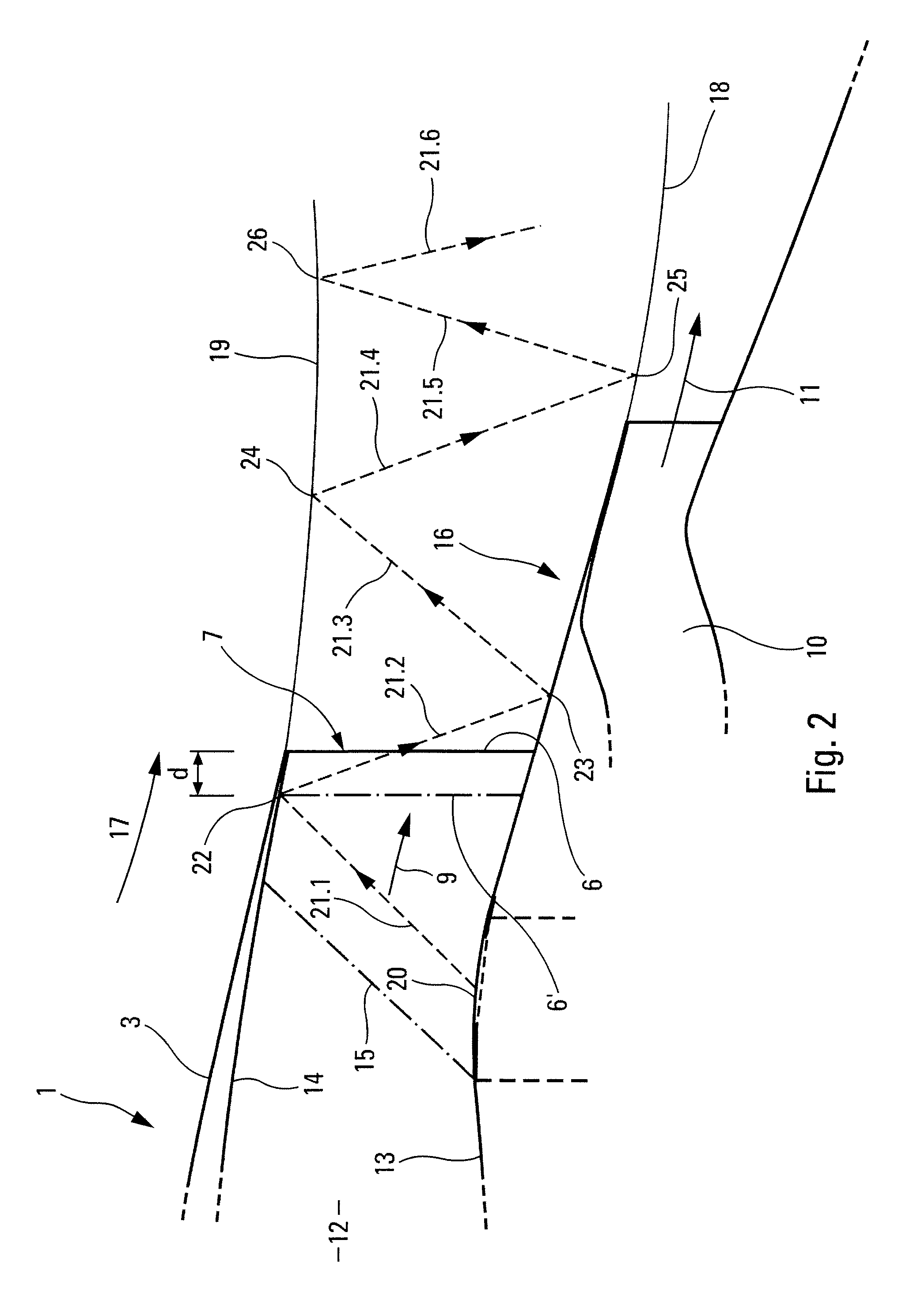Aircraft turbofan engine
a turbofan engine and aircraft technology, applied in the field of aircraft turbofan engines, can solve the problems of generating considerable noise, negatively affecting therefore that of the aircraft carrying, and achieve the effects of improving the performance of the turbofan engine, reducing the noise of the shock cell, and reducing the noise of the cold stream
- Summary
- Abstract
- Description
- Claims
- Application Information
AI Technical Summary
Benefits of technology
Problems solved by technology
Method used
Image
Examples
Embodiment Construction
[0026]The turbofan engine 1, of longitudinal axis L-L, shown in FIG. 1, comprises a nacelle 2 bounded externally by an outer nacelle cowl 3.
[0027]The nacelle 2 comprises, at the front, an air inlet 4 provided with a leading edge 5 and, at the rear, an air outlet orifice 6 provided with a trailing edge 7.
[0028]Inside said nacelle 2 are arranged:[0029]a fan 8 directed toward the air inlet 4 and able to generate the cold stream 9 for the turbofan engine 1;[0030]a central generator 10 comprising, in a known manner, low-pressure and high-pressure compressors, a combustion chamber and low-pressure and high-pressure turbines, and generating the hot stream 11 of said turbofan engine 1; and[0031]an annular cold-stream duct 12 formed around said central generator 10, between an inner fan cowl 13 arranged in the region of the central generator 10 and an outer fan cowl 14 arranged in the region of the outer nacelle cowl 3.
[0032]The inner and outer fan cowls 13 and 14 between them form a nozzle ...
PUM
 Login to View More
Login to View More Abstract
Description
Claims
Application Information
 Login to View More
Login to View More - R&D
- Intellectual Property
- Life Sciences
- Materials
- Tech Scout
- Unparalleled Data Quality
- Higher Quality Content
- 60% Fewer Hallucinations
Browse by: Latest US Patents, China's latest patents, Technical Efficacy Thesaurus, Application Domain, Technology Topic, Popular Technical Reports.
© 2025 PatSnap. All rights reserved.Legal|Privacy policy|Modern Slavery Act Transparency Statement|Sitemap|About US| Contact US: help@patsnap.com



